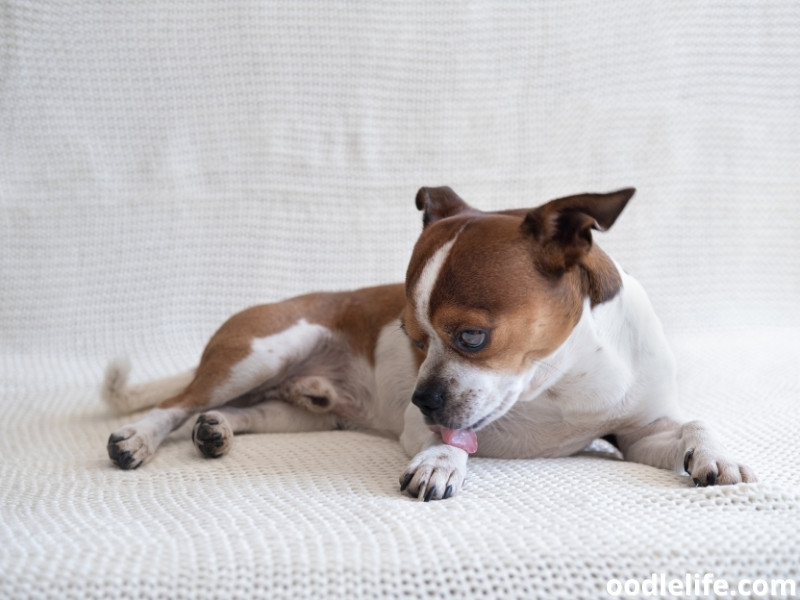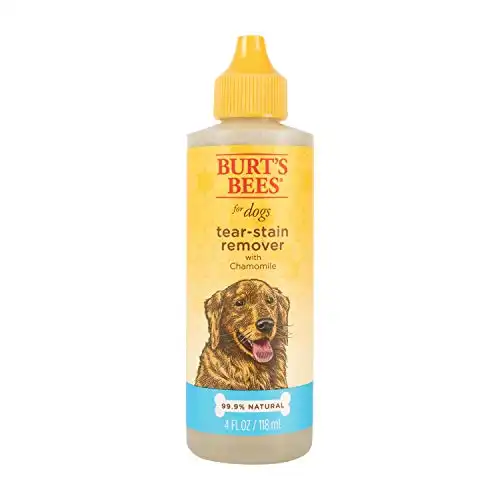Dog Fur Turning Rust Color (5 Causes)
Every dog owner wants to ensure their furry friend is as happy and healthy as possible. So it can be upsetting and frustrating when something is happening to your dog that you don’t understand.
If you own a dog with light-colored fur—particularly a white dog—you may have noticed some staining of your dog’s fur. Fur staining is normal, especially in white dogs, and it is often simply the result of accumulated dirt, grass stains, or water.
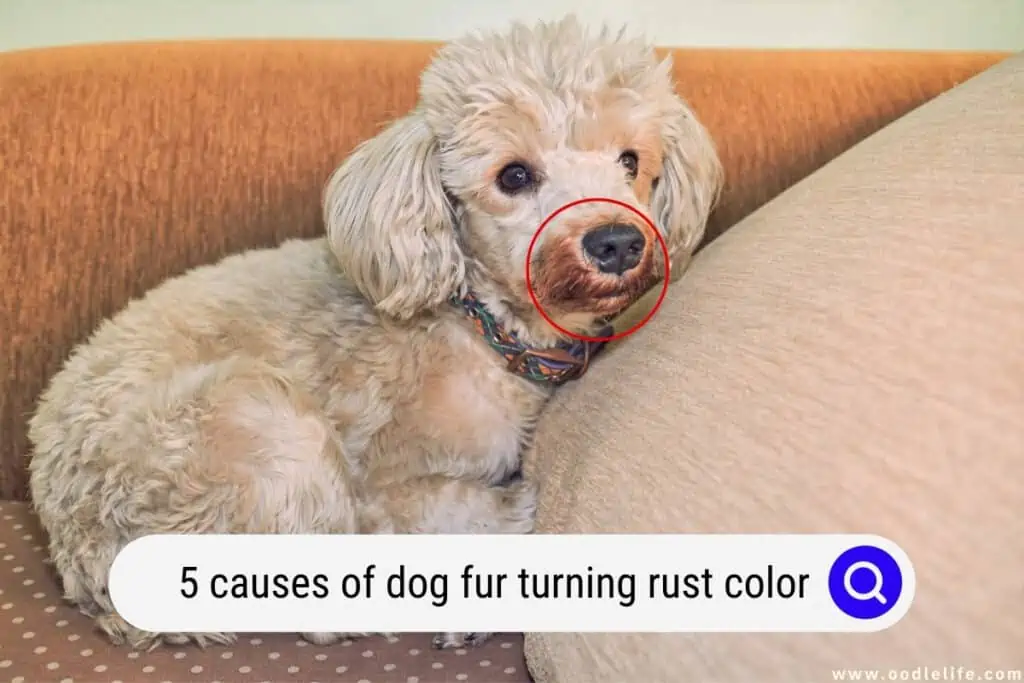
However, a dog’s fur turning a rust color usually indicates something more than a roll in the dirt. There are a few specific underlying causes of rusty fur in white dogs. The good news is that most of them are easily treatable.
Veterinarian Dr Charlotte Stiles (DVM)
At the Chemical Level
The chemical cause of rust-colored fur is a compound called porphyrin. Porphyrin is a naturally occurring protein that binds to iron. Porphyrin is found in red blood cells and is typically excreted from the body in feces, tears, saliva, and urine.
Because Porphyrins bind to iron, they pull the iron out of the body when they leave. The iron that exits the body and comes into contact with oxygen in the air rusts, creating a reddish-brown color. All dogs excrete Porphyrins in their tears, saliva, feces, and urine.
When dogs shed tears or lick themselves, they transfer the reddish-brown color to their fur. The rust will build up in their fur over time if the tear-shedding or licking is excessive. The rusty iron in those liquids is much more visible in white dogs.
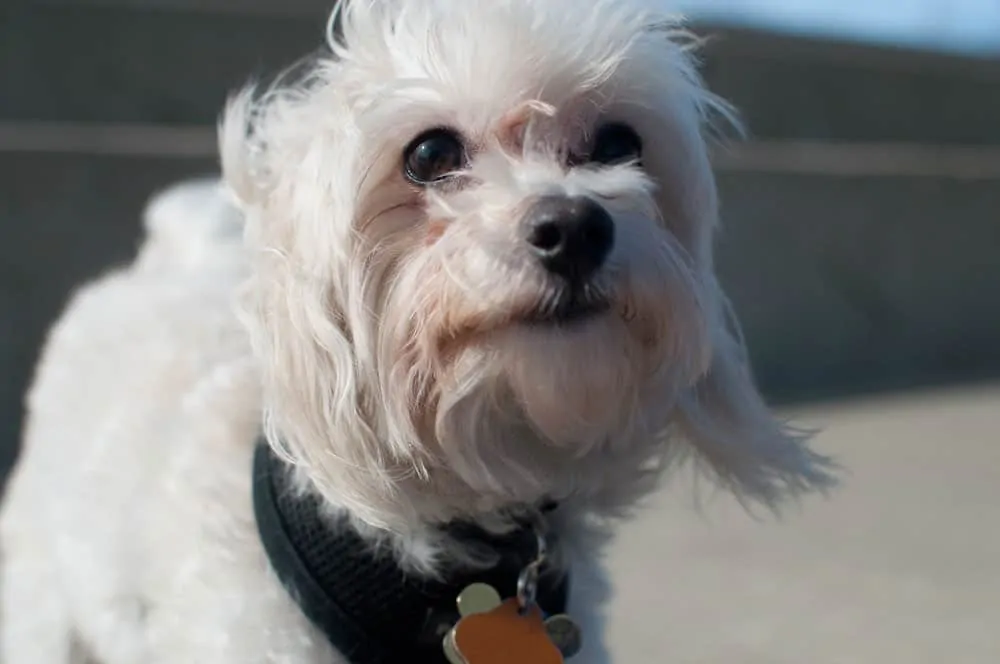
Causes of Rusty Fur in Dogs
Now that we better understand what causes your dog’s fur to look rusty, let’s look at some more specific causes.
Allergies
Dogs can develop allergies just as humans can. Your dog could be allergic to pollen, food, dander (yes, pet hair!), grasses, dust—you name it! Anything you could be allergic to, it’s possible your dog could also be allergic to.
Allergies can sometimes cause irritation and inflammation of the eyes. When this happens, the eyes produce more tears. Tears contain Poryphins, which get into the fur around and under the eyes and stain it.
Allergies also often cause itchiness and general discomfort. When dogs are itchy or uncomfortable, their instinct is to lick, scratch, or chew the affected area. Licking transfers saliva to the fur, and over time, porphyrin in the saliva builds up in the fur and gives it a rusty color.
If you suspect your dog may be suffering from allergies, talk to your vet. In some cases, food allergies in dogs can be diagnosed and managed using an elimination diet. Other allergies may require long-term medication or avoidance of the trigger.
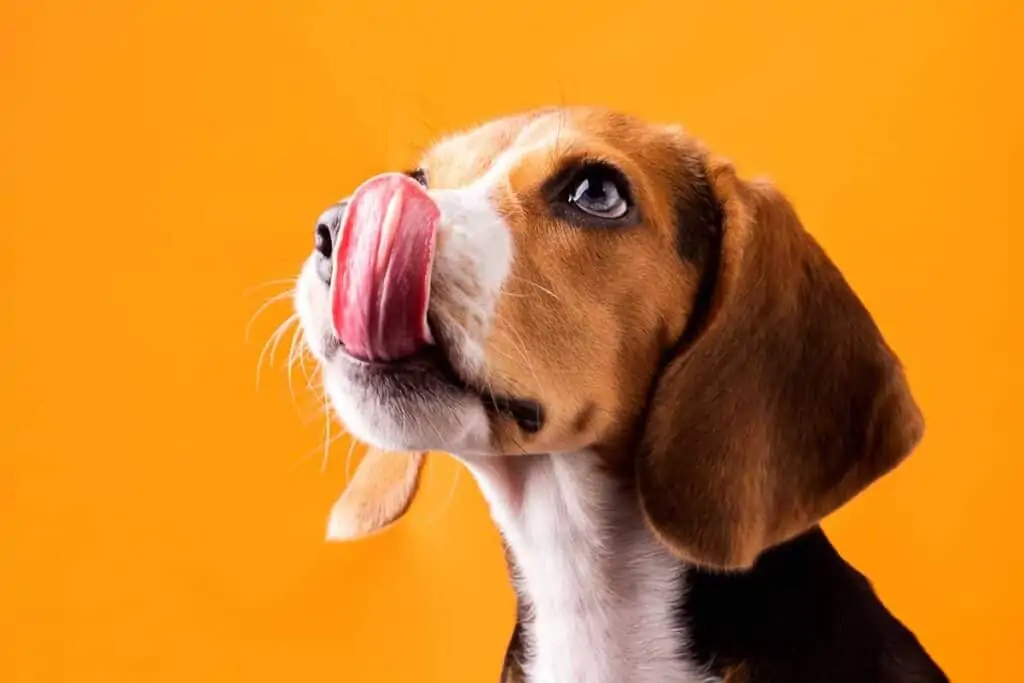
Breed
Some breeds are more susceptible to fur staining, particularly around the eyes, nose, and mouth. These are typically brachycephalic breeds like Pugs, Boxers, Bulldogs, and Bichons. In brachycephalic dogs, the muzzle is short, and the dog may have a flat face.
The brachycephalic facial structure can lead to many health issues, including respiratory and dental problems, eye issues, and skin infections. Dogs with this facial structure typically have poor drainage from the eye sockets and nose, leading to a buildup of tears and nasal discharge.
Over time, the porphyrin in this discharge will stain the fur. While this is only a cosmetic issue, it is indicative of an underlying health issue that you should monitor. Buildup can become infected and lead to dangerous health situations if left untreated.
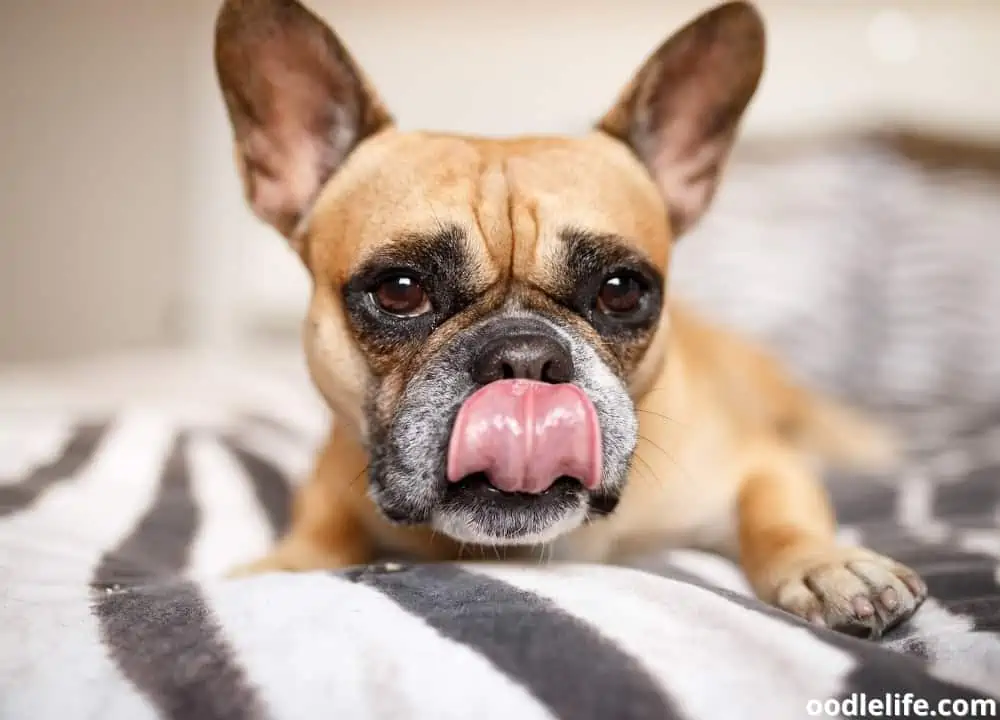
Issues With Eyes and Tear Ducts
If a dog’s tear ducts become blocked or infected, or if the eyes are irritated, it can lead to an overproduction of tears, which can stain the fur around the eyes. Sometimes, the cause of eye irritation can be as simple as overgrown hair poking and rubbing the eyes.
In other cases, eye irritation might indicate an underlying medical condition. Talk to your vet if your dog’s eyes are irritated. Distemper, herpes, and canine influenza can all contribute to eye infections. Bacteria, yeast, and trauma to the eye could also be to blame.
Your vet can put your dog on medication to relieve the irritation and treat the underlying cause.
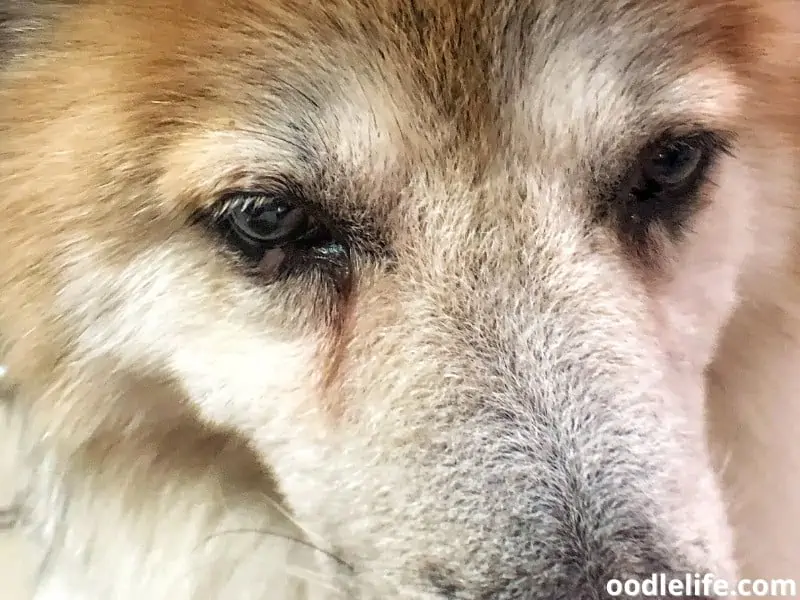
Dental Problems
Issues such as periodontal disease, injury to the teeth or mouth, and abscesses or other sores can cause your dog to overproduce saliva. Eventually, the Porphyrins in their saliva will stain the fur around their nose and mouth.
Dental problems can be easy to spot if your dog exhibits other symptoms such as reduced appetite, weight loss, lethargy, and depression.
Dental problems can become serious and even lead to problems elsewhere in the body if left untreated, so talk to your vet immediately if you suspect your dog might suffer from a loose tooth, gum disease, or a mouth sore.
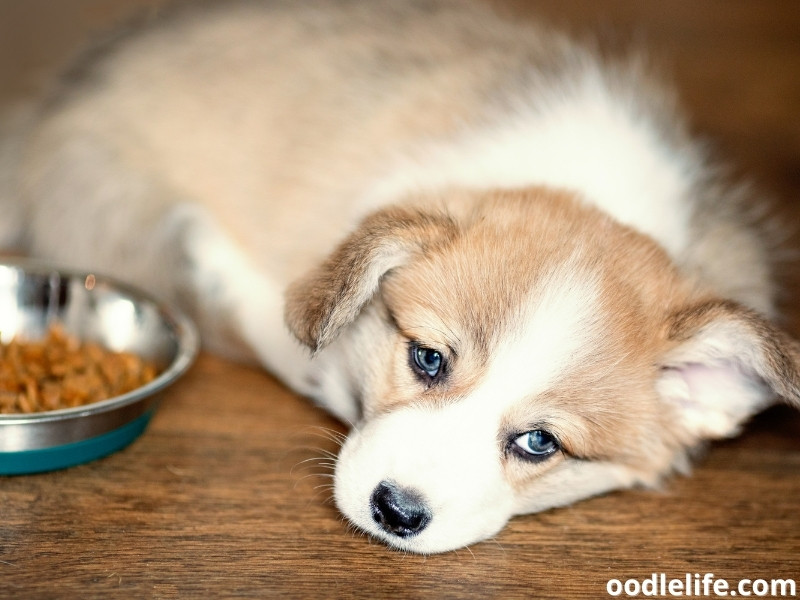
Skin Irritation
When dogs get itchy, they lick and bite themselves. Over time, the iron-bonded proteins in their saliva will transfer to their fur and stain it. This is one of the major causes of rust-colored fur in areas beyond the eyes and mouth (for example, around the paws, hips, or back.)
If you notice a lot of rusty fur around your dog’s paws, they could have a foreign object embedded in a paw pad or between their toes. They could also be suffering from hyperkeratosis, or they may have burned their paws while walking on a very hot or very cold surface.
Behavioral Issues
Another reason dogs excessively lick and bite themselves is anxiety and boredom. If your dog has rusty fur, particularly around the paws or hind legs, and you’ve ruled out a skin issue, consider a behavioral solution.
Anxiety
Is your dog getting enough exercise? Is it getting proper mental stimulation?
Does your dog have plenty of chances to interact with its favorite people or other doggie friends? Does it spend long hours sitting alone during the day?
Anxiety in dogs can cause many problems, from excessive licking to aggression. However, it is often treatable with behavioral adjustment training or medication in extreme circumstances.
If your dog is suffering from anxiety, it is likely unhappy and needs your help to get better. Look for other symptoms such as pacing, whining, whale-eye, shaking, urinating or defecating in the wrong place, aggression, or destructive behavior.
Talk to your vet if you think your dog may be suffering from anxiety. Your vet can recommend a certified professional behaviorist to help you.
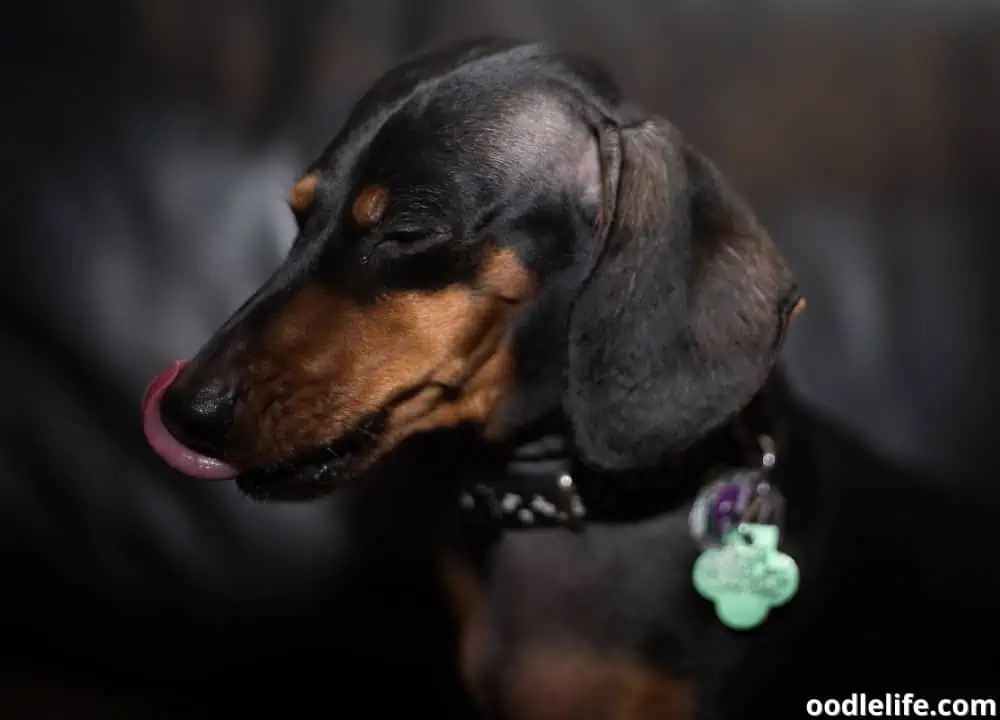
How To Get Rid of Rust-Stained Fur?
Once you’ve identified and addressed the underlying cause of your dog’s fur turning a rust color, getting rid of the stains is easy. You can manage fur stains with routine maintenance like wiping your dog’s eyes daily and wiping their muzzle after meals.
There are plenty of tear stain removers that are formulated to gently remove stains without irritating your dog’s eyes. These can be used around the mouth and in other areas as well. There are also shampoos made for white dogs.
If you’d prefer a DIY solution, try baking soda. Baking soda is a natural bleaching agent that won’t harm your dog’s coat or skin. You can sprinkle baking soda directly on your dog’s coat and brush it in, or mix it with water into a paste and apply it using a soft cloth.
Allow the baking soda to remain in the fur for about five minutes before rinsing it out.
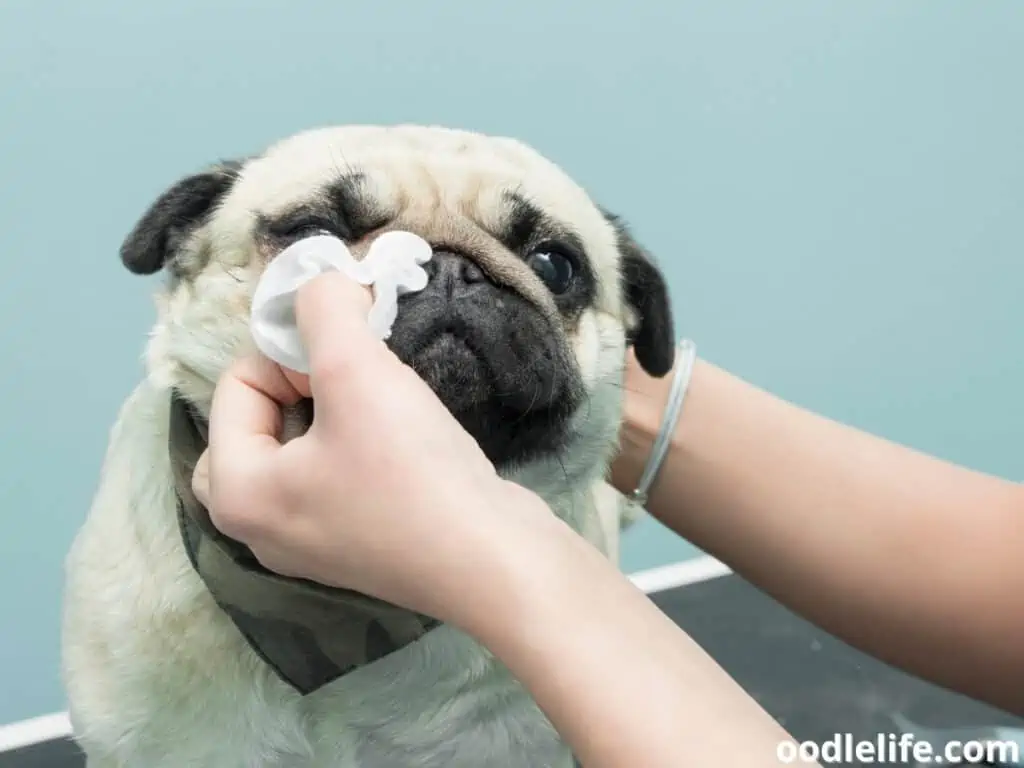
Conclusion
A dog’s fur turning a rust color is more than just a cosmetic nuisance. It can indicate underlying health conditions you may need to address to make your furry pal happier and more comfortable.
Talk to your vet if you think your dog’s rusty fur might be caused by allergies, eye or skin irritation, dental disease, or anxiety.
